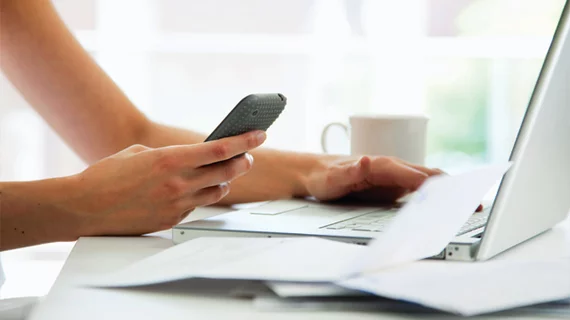Smartphone apps offer interactive, on-the-go learning for millennial radiology students
Integrating mobile learning into the radiology classroom via smartphone apps could offer individualized study options while supporting a more blended learning model, a pair of researchers reported in Radiography this month.
Mobile learning offers an experience tailored to millennials, who are known to absorb information differently than older generations and are rarely seen without a smartphone in hand, lead investigator L.R. Greene, of Stanford University’s Division of Nuclear and Molecular Imaging, wrote in the journal. She and co-author K.M. Spuur, who hails from Charles Sturt University in New South Wales, Australia, said mobile learning could be an important option for radiologists-in-training since their curriculum is so technologically dense.
“Digital materials accessed on mobile devices offer advantages over traditional materials like books, journals and models, such as greater convenience, accessibility, durability and portability—both physical and virtual,” Greene and Spuur said. “The continually expanding social connectedness has far-reaching potential, particularly in areas that rely heavily on technological advancements, such as medicine and education.”
It’s become apparent in recent years that millennials learn differently than their predecessors, the authors wrote, and thrive in blended classrooms that combine traditional face-to-face lectures and interactive online content. Shifting toward a more tech-centered curriculum paves the way for a customizable, learner-centered environment in which millennial students can flourish.
The majority of medical radiation science (MRS) apps on the market are focused around teaching and feature flashcards, revision guides, online textbooks or notes, tutorials, reference guides, protocols, glossaries and calculators. It’s a promising start, Greene and Spuur wrote, but a minor fraction of radiology students are actually downloading those resources.
To gauge both interest and potential for apps as a learning resource, the researchers distributed a 28-question survey to 415 students at CSU, eventually receiving 97 responses. Of those who responded, just 37 percent said they used MRS apps at least once a week, while 78 percent wrote they were unaware the resources even existed. Still, Greene and Spuur reported, 91 percent of students said they’d utilize MRS apps if they were integrated into their curriculum.
“Students commented on content reliability, stating there would be a ‘sense of authenticity associated with the app’ if supported by the lecturer,” the authors wrote. “Thus, tasking lecturers with ensuring the app was accurate, user-friendly and incorporated as a meaningful supplemental tool could potentially alleviate these valid arguments.”
Indeed, just 11 students fact-checked MRS apps before downloading them. Of the applications, anatomy atlases were by far the most popular download, while textbooks, exam revision aids and reference guides were also commonly used. Students reported they mainly used the resources at home or on their university’s campus, but a handful of students said they started using the apps to revise during their commute, or replaced their social media use with the apps entirely.
Greene and Spuur said more research needs to go into how to implement mobile learning in the classroom, but the data is positive.
“Medical radiation science continues to be a profession where the use of technology is pervasive,” they wrote. “Today, educational institutions should strive to balance the authenticity of the profession with the desires of the learner, which mobile learning could help facilitate.”

